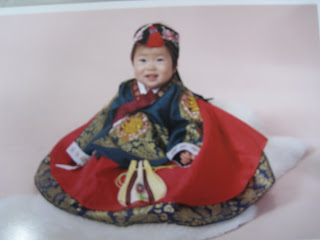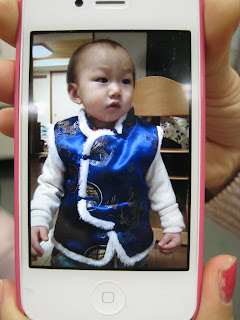司会者)お産した後、赤ちゃんと自宅に戻りますね。 家事や赤ちゃんの面倒など誰がみていますか? どちらかのお母さんに来てもらい家事など手伝ってもらう。 又は夫が休暇を取って赤ちゃんの面倒をみたり家事もする。 貴方の国ではどうしていますか?

* 韓国にいる母は高齢で体調も良くなかったけど、無理やり手伝いに日本まで来てもらった。 良いこと ではないですね。
* 日本人は出産の約2か月前に実家に戻ります。 入院は1週間です。 産後1箇月ぐらい実家で面倒みてもらいます。
* アメリカの義理母は「無痛分娩で出産し2日後には退院して普通の生活をするよ。 別に問題はない」と言いました。
* 中国では娘が赤ちゃんを産んだ後、娘の母親が育児をするのが当たり前です。 私も中国で子供を産んだだけで育てていません。
* 韓国ではママと赤ちゃんが退院後、体を休める施設があります。 赤ちゃんの面倒もみてくれるし、ご飯もあるのでママは助かります。
* 羨ましい! 韓国だけじゃない? 他の国では聞いたことがないよ。
司会)貴方の国では産後の食事をどうしていますか? むくみを取る、体力を付ける、血液をきれいにするなどの特別な食事がありますか?
* 韓国ではわかめスープを飲みます。 血液をきれいにすると言われています。 3食毎回わかめのスープが出ますので飽きます。 1箇月間は続けて飲みます。 誰かの誕生日には全員でわかめスープを飲むのも習慣です。
* 韓国ではカボチャの種を取り、その中に蜂蜜を入れてコトコト煮るとスープになります。 産後の浮腫みが早く取れるのでこれも必ず出ます。 豚足を食べるとむくみが取れると言われています。
* 韓国では鯉(魚)とあずきを蒸して食べると体の痛みを和らげると言われています。
* 日本では産後お餅や鯉こくのスープを飲みます。 母乳がよく出ると言われています。 お餅は乳が張りすぎるので良くないらしいです。
* 中国では鯉は土臭いから食べない。 鯛(魚)の御頭スープを飲みます。 新陳代謝を良くします。 漢方薬もよく使いますね。
* 日本では産後の特別な食事はありませんね。 翌日から普通食を取っていますよ。
* 日本人の義理母が手伝いに来たが、食事は皆と同じだったので驚いた。
* 日本のやり方は不思議、信じられない。 年取ってから何か出るのでは? 更年期が怖い!!
* 中国では産後は鳥肉の皮を食べてはいけない。 体力を早く戻したいのなら羊の肉が一番いい。 産後、1箇月間はもち米とソーメンを食べる。
* 日本人はどうして漢方薬を使わないの? 朝鮮人参のスープを作って子供にも飲ませようとしたら、日本人の夫に止められた。 子供に飲ませるのを怖がる。 ショック。
司会)産後の休みは十分に取っていますか?
* 産後の休みはしっかり取らないと後で怖いことになる。 尿漏れが多いのもその一つ。
* 子供がいたらしっかり休めないでしょう?
* アメリカやヨーロッパの人は産後そんなに休んでいないと思う。
* 中国、韓国では産後、水を使ってはいけない。 シャワーもしない。 水を使うと手がしびれる。 やはり誰かの手助けが必要ですね。
* スペイン人の夫は子育てについて何も言いません。 日本のやり方と殆ど同じですね。
* フィリピン人ですが日本でお産して日本のやり方をそのまま受け入れました。 問題は無かった。
司会)韓国では生後100日でお祝いをします。 1才の誕生日には300人~500人の招待客を呼んでレストランで盛大にお祝いします。 1才の誕生祝いに24金のネックレスをプレゼントします。 貴方の国はどうですか?


* 韓国では1才の誕生日に子供の将来を占う儀式をします。 テーブルに鉛筆、お金、糸を置いて赤ちゃんに取らせます。 「鉛筆は勉強が好きな子になる、お金はお金持ちになる、糸は長生きする」と言う意味があります。
* 中国も同じことをします。
* 日本は無いですね。
* 中国では誕生祝いはゴールド・24金ですね。 その子が成長して家を建てるときの資金にします。 初めの孫は沢山もらえるけど、後に続く子供は待たされますね。
* 日本ではお金をあげることが多いです。 出産祝い、誕生祝いなど綺麗な封筒に入れて渡します。
* 日本人はお祝い事は半返しするでしょう。 外国人から見ると、あれはおかしいと思う。 せっかく貰ったのにどうして半分返さなければならないのか理解に苦しむ。 日本人はケチですか。
司会)離乳食についてはいかがですか。
* 韓国人は赤ちゃんに何箇月でキムチを食べさせるのですか?と聞かれます。 答えは赤ちゃんには食べさせないです。 キムチは歯が生えてきた頃、水で洗って辛味を取って小さく刻んで食べさせます。
* 韓国では骨付き肉をしゃぶります。 2才ぐらいになると噛む力があるのでカルビなど肉を食べさせます。
* 韓国では昔、牛の足をコトコト煮込んで油を取って骨のエキスで真っ白なスープになります。それを子供に飲ませると夏バテしないと言われました。
* 日本では「うなぎのかば焼き」ですね。
司会)国際結婚の場合、子育てについてパートナーと意見が食い違うことが多いです。 同じ国の人と話したい、同じ年齢の子供を持つ人に相談したいと思います。
国際子育てひろばコアラは私たち外国人にとってそれを解決してくれる場所です。 楽しいです。
1月の誕生会;
首藤 七海ちゃん 1月1日生まれ 1才 お誕生日\_(^◇^)_/\(*^^*)/ おめでとっ!
皆で誕生日の歌 ♫ Happy Birthday to you ♫ を歌いお祝いしました。

世界の子育て座談会はとても楽しかったです。 初めて聞く話もありました。 国によって習慣、風習が違うので異国で生活していくことは大変だと改めて思い知らされました。 皆さん、有難うございました。♥♥ 司会の佐藤さん、お疲れさまでした。(#^.^#) 素晴らしかったですよ。 有難うございました。
A chairwoman was Sato Yuri san from Korea. Participants were Japanese, Chinese, Korean, Philippine. We wanted to hear the opinion from Mongolian, Cambodian, Thai who were absent from Koala meeting. We had three visitors from The Kawasaki International Association.
Chairwoman) You return to your home with a baby after you delivered it. Who would take care of your baby and do housework? Mother might come to help your housework. Or your husband would take paternal leave to manage about household chores.
* Korean mother is an old woman and was out of shape, but she dared to come to Japan to help me. I sympathized with her condition. That was no good.
* The Japanese go back to her parents' home about two months prenatal. Hospitalization is a week. After they left hospital,her parents would take care of their daughter and a baby for a month.
* American mother-in-law said that she left hospital only two days after she delivered a baby by painless delivery. No problem at all.
* It is only natural that Chinese mother takes care of a baby after her daughter delivered it. I hadn't brought my children up.
* In Korea, we have facilities for taking care of me and my baby since we left the hospital. It is very helpful for us.
* We envy you. Only Korea? I've never heard it from other countries.
Chairwoman) Do you have a special meal for postpartum woman to take dropsy off, to get back her strength and for blood circulates through the body in your countries?
* In Korea, we used to take Wakame (soft seaweed) soup that is good for blood circulation. Wakame soup is served every meal for a month. We become bored with it. It is custom that some one's birthday is also served Wakame soup to everybody.
* Korean used to cook another soup that is to remove seeds from pumpkin and pour honey into it and simmers. This soup also effects to remove swelling. It is said that pork leg is also good for woman.
* In Korea, it is said to ease body pains that is a soup which is steaming with Carps and small beans.
* In Japan, we used to take rice cake and carp soup after delivered a baby. These are good for flowing out mother's milk. But rice cake makes our breasts feel swollen with milk.
* In China, we don't have carp soup because of its odor. We take bream soup. It is good for metabolism. We are apt to cook using Chinese herbal medicine.
* In Japan, we don't have a special meal for postpartum woman. We take normal meal.
* Japanese mother-in-law helped me cook the meal. I was surprised that my meal was the same as others.
* Foreigners don't understand Japanese way. Scared, something like a menopausal disorder may occur to your body in the future.
* In China, postpartum woman is not allowed to eat skin of chicken. If you want to get back your strength, mutton is best. We eat glutinous rice and noodle (somen)for a month.
* Why Japanese people don't use the Chinese herbal medicine for your health? When I cook soup using herbal Korean carrot for my baby, my Japanese husband stopped me giving that soup. I was shock.
Chairwoman) Did you take enough rest after delivered a baby?
* Without taking enough rest, you may have urinary organs disorder in the future.
* We don't take enough rest if we would have children, do we?
* I think American and European women don't take enough rest after delivered.
* In China and Korea, we are not allowed to use the water even taking shower. We are numbed with water. We certainly need some one's help.
* My Spanish husband never complain to me about child raising. Our way of thinking are almost same.
* I,Philippine had borne Japanese husband two children. I gave birth to them in Japan but no problem at all.
Chairwoman) In Korea, we hold a celebration 100 days after her birth. We invite 300~500 guests for her one year old birthday and have a magnificent party at the restaurant. We make her a present of a 24-gold necklace at her birthday. How do you celebrate her in your countries?
* Korean have rituals at her one year old birthday to divine her future. We put pencil, money, thread on the table. Which item does a baby will take? If she chose a pencil, she would become a studious child, money shows rich and thread shows longevity.
* Chinese do the same thing.
* Japanese don't do this.
* Chinese give 24-gold for her first birthday present. This would be resources of her house building in the future. A first-come, first-serve. Second child have to wait.
* Japanese often give a money putting in neat envelope for her birthday present and congratulation on her childbirth.
* Japanese have to return half of money to a giver on congratulation matters. Foreigners never never understand this customs. Why do I have to return half of money to giver? Are Japanese stingy?
Chairwoman) What do you say about baby food in your countries?
* Japanese often ask me when Korean give "Kimchi" to a baby. The answer is not to give it to a baby. Korean will give kimchi when a child has teeth. We rinse it and chop up it finely.
* Korean like to suck bones. We give meat to child aged 2 when he grow up to be able to chew.
* In the old days, Korean cooked white soup made from cow leg bone essence. This is good for summer lethargy. Korean used to give this soup to children.
* In Japan, we have "broiled eel".
Chairwoman)In case of International marriage, A partner's opinion sometimes differs from mine on child raising. I want to talk with my countrywoman or want to consult with someone who has similar situation. International Parents and Infants Cross Cultural Group KOALA is the best place for foreigners. Members will help.
January Birthday Party;
Shudo Nanami, Born in January 1. 1 year old. Happy Birthday to you.
We sang a song ♫ Happy Birthday to you ♫ together for her.
I enjoyed "A discussion on the child raising in your countries". I could know a lot of thing. I noticed that foreigners have difficulties living in Japan because of difference of their customs and habits. Thank you everybody, Thank you chairwoman, Sato san. You have done a good job.(-^〇^-)



